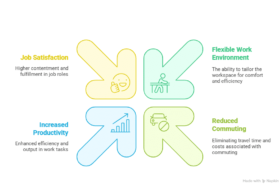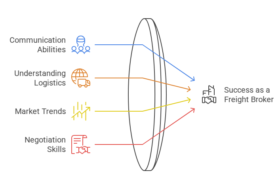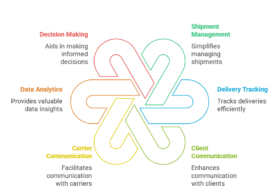In today’s fast-paced world, the logistics industry plays a vital role in ensuring the smooth movement of goods across vast distances. Freight brokers act as intermediaries between shippers and carriers, facilitating the transportation process. To optimize their operations and provide exceptional service, freight brokers leverage load board integration. In this article, we will explore the concept of freight broker load board integration, its benefits, challenges, and best practices. Let’s dive in!
Freight Broker Load Board Integration
Freight broker load board integration involves seamlessly connecting load boards and transportation management systems (TMS) to streamline logistics operations. By integrating these systems, freight brokers gain access to a comprehensive pool of available loads and carriers, allowing them to optimize load matching and enhance overall operational efficiency.
Benefits of Freight Broker Load Board Integration
Enhanced Operational Efficiency: Freight broker load board integration eliminates the need for manual load searching, reducing the time and effort required to find suitable loads and carriers. With real-time load board updates, brokers can quickly identify available capacity, make informed decisions, and expedite load matching processes.
Improved Communication and Collaboration: Integration enables efficient communication and collaboration between shippers, carriers, and brokers. Real-time data exchange ensures accurate and up-to-date information sharing, leading to smoother logistics operations, reduced miscommunication, and enhanced customer satisfaction.
Increased Access to Available Loads and Carriers: Integration provides freight brokers with a wider selection of available loads and carriers. Brokers can expand their reach, tap into new markets, and secure better load rates by leveraging the increased visibility and access to a larger network of shippers and carriers.
Real-Time Tracking and Visibility: Load board integration enables real-time tracking of shipments, allowing brokers to monitor cargo movement, track deliveries, and provide accurate updates to customers. Enhanced visibility into the supply chain empowers brokers to address any potential disruptions proactively, ensuring timely and efficient deliveries.
Challenges in Freight Broker Load Board Integration
Technical Compatibility and System Integration: Integrating load boards and TMS systems can present technical challenges. Ensuring compatibility between different platforms, addressing data formatting issues, and implementing seamless data exchange require careful planning and coordination between software providers.
Data Security and Confidentiality: Integrating systems involves the transfer of sensitive business and customer data. Brokers must prioritize data security by implementing robust encryption measures, access controls, and regularly monitoring system vulnerabilities to protect confidential information from unauthorized access or breaches.
Training and Adoption: Successfully integrating load boards into existing workflows requires user training and adoption. Brokers should invest in comprehensive training programs to familiarize employees with the new integration features, ensuring optimal utilization and a smooth transition for all stakeholders.
Best Practices for Seamless Integration
Choose the Right Load Board and TMS: Thoroughly research and select a load board and TMS that align with your business requirements and integration goals. Consider factors such as ease of use, scalability, customer support, and compatibility with existing systems.
Ensure Data Accuracy and Integrity: Accurate and up-to-date data is crucial for successful integration. Regularly validate and clean data, resolve any discrepancies, and establish data quality control processes to ensure the integrity and reliability of information exchanged between systems.
Establish Clear Communication Channels: Clear communication channels between brokers, shippers, and carriers are essential for efficient integration. Define communication protocols, establish contact points, and leverage technology such as messaging platforms or collaborative tools to foster seamless information exchange.
Regularly Monitor and Update Integrations: Integration is an ongoing process. Regularly monitor integration performance, system updates, and evolving industry standards. Stay informed about new features and functionalities provided by load board and TMS providers to optimize integration benefits continually.
Frequently Asked Questions (FAQs)
- How does freight broker load board integration benefit logistics companies?
- Freight broker load board integration improves operational efficiency, enhances load matching capabilities, and facilitates real-time tracking, leading to streamlined logistics operations and increased customer satisfaction.
- Can freight broker load board integration work with existing systems?
- Yes, freight broker load board integration can be seamlessly integrated with existing transportation management systems, enabling efficient data exchange and enhancing overall operational workflows.
- What measures should be taken to ensure data security in integrations?
- To ensure data security, freight brokers should implement robust encryption measures, access controls, and regular vulnerability assessments. They should also comply with industry regulations and best practices for data protection.
- Is training necessary for users to adapt to load board integration?
- Yes, training is crucial for users to adapt to load board integration. Brokers should provide comprehensive training programs to familiarize employees with the integration features and ensure optimal utilization.
- Can load board integration improve customer satisfaction?
- Yes, load board integration enhances load matching efficiency, real-time tracking, and communication, leading to improved customer satisfaction through timely deliveries and accurate information sharing.
- How can brokers leverage real-time tracking for better decision-making?
- Real-time tracking enables brokers to monitor shipments, track deliveries, and proactively address any disruptions. By leveraging real-time data, brokers can make informed decisions, optimize routes, and mitigate delays.
Freight broker load board integration revolutionizes logistics operations by enhancing operational efficiency, improving communication, increasing access to available loads and carriers, and providing real-time tracking and visibility. Although challenges such as technical compatibility, data security, and user adoption exist, adhering to best practices ensures seamless integration. By embracing load board integration, freight brokers can streamline their processes, improve customer satisfaction, and gain a competitive edge in the dynamic logistics industry.
Growth + Change = Opportunity! How are you going to capitalize on the opportunity as a freight broker, agent, dispatcher or box truck carrier?








